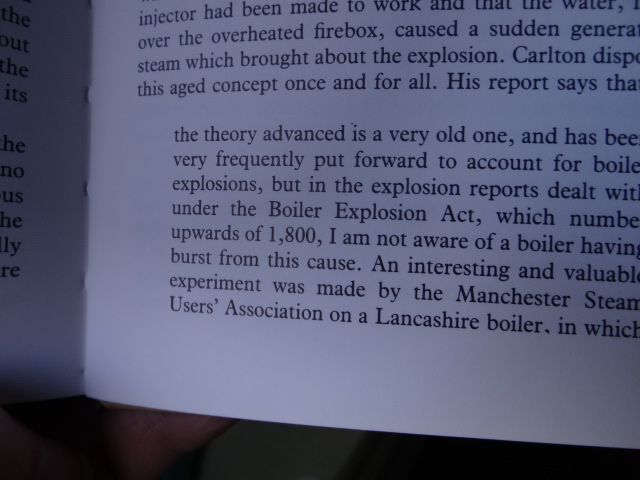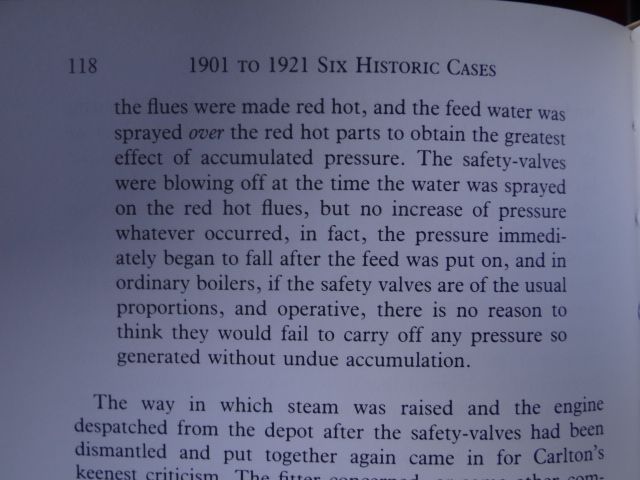Posted by Hopper on 09/07/2022 06:33:02:
…
That way, if you look up and see no water in the glass, before adding cold feedwater and possible blowing a red-hot crown or tube, you shut the top gauge glass cock and look for water to rise up the glass. If water comes up, you have water at the bottom pipe connection and thus above any heated surface. In this case, it is safe to open the feed control bypass valve and add more feedwater….
Apologies for diverting the thread, but my reading says it's a myth that boilers burst when water is sprayed on a red-hot crown.
During the steam-age thousands of boilers caused havoc by bursting. The reasons were studied carefully, resulting in dozens of safety measures: water treatments; duplicated pressure gauges, water feeds, and safety valves; tamper-proof safety valves to stop 'real-men' weighing them; automatic feed and shutdown; fuseable plugs; mandatory inspections and insurance; improved materials and design; plus ever harsher penalties for negligence and avoidable accidents.
At the time It was widely believed that spraying cold-water on to a red-hot surface would cause the resulting flash of steam to burst the boiler. Common sense, obvious innit. But experiments showed it's wrong. What actually happens is red-hot metal is so weak and plastic that it can't withstand normal pressure. The boiler shell sags and balloons while the stays stretch and tear out.
Best answer is to operate the boiler such that water never runs low! Next best is to kill the fire before anything gets red-hot. In the event the operator arrives to find a low-water emergency in progress, venting the boiler and spraying on lots of water is the operators best chance. Although adding water does indeed generate more steam, the main effect is cooling the metal, with luck restoring it's strength within the boiler's design safety factor before the shell gives way.
Whether to run away or not is an almost impossible decision. Staying to operate the controls risks the boiler blowing before it can be made safe. Running away risks injury if the boiler blows before you can get far enough away! As Boiler rooms aren't noted for ease of access, it might less dangerous to make safe than to run away. And the operator might be done for whatever he does.
My authorities are Victorian though. Maybe their experimental work was wrong or that a later development does cause modern red-hot boilers to explode when sprayed with cold-water?
Keeping a sense of perspective, its true that model locomotive boilers don't contain enough energy to be seriously dangerous. They're tiny compared with full-size boilers, usually operated carefully in the open, and are made of Copper which tends to give way gently by tearing rather than disintegrating violently. Not terrifying, but still energetic enough to cause expensive injuries and therefore must be operated responsibly. Blinding a child is traumatic for all concerned and the resulting financial liability for life changing injuries is enormous. Hence Clubs and Owners operating in public have to make sure boilers are properly certificated.
What's the biggest boiler in Model Engineering? I guess a big Traction Engine. I'm not in the least afraid of standing next to them, because they look well-built, their owners appear competent, and I know they require an up to date certificate. All reasonable precautions have been taken.
Dave
Paul Kemp.






